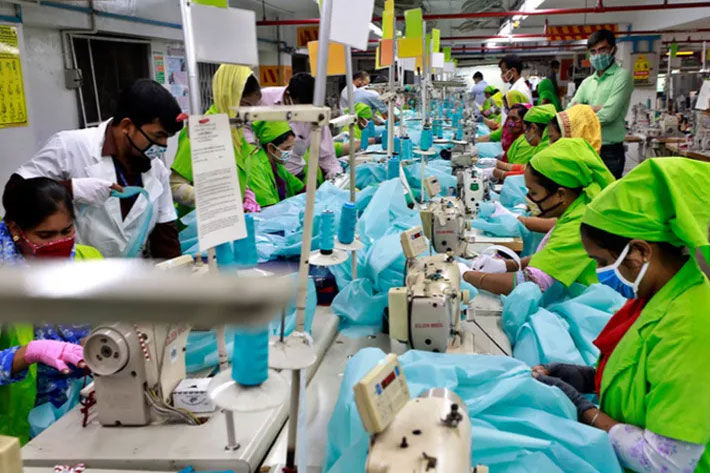Women in Asia's RMG sector get lower wages than men: ILO report

However, challenges such as rising labour costs, production and process automation, ‘reshoring’ and ‘nearshoring’, as well as increased pressure to transition towards a more sustainable business model, with improved wages and working conditions are creating an uncertain future for the industry and workers alike, ILO said in a report titled ‘Employment, wages and productivity trends in the Asian garment sector’.
“While in many countries the sector has seen growth in both wages and productivity, the relationship is not always clear and simple, as government policies and external forces can play a big part in shaping outcomes for workers and businesses,” noted David Williams, manager of the ILO’s Decent Work in Garment Supply Chains Asia programme .
For decades, the sector has relied heavily on low labour costs to secure global market advantages. Real wages in the sector have increased in most countries although working conditions remain challenging in general, including long and intense working hours, poor occupational safety and health as well as violations of fundamental rights at work, the report said.
Despite the high share of wage and salaried employment and the dominance of larger firms in most countries, a significant proportion of the sector’s workers also remain highly vulnerable, due to widespread informality and the temporary nature of their working arrangements.
Female employees are overrepresented among the sector’s low pay workers, and countries with the lowest shares of female workers also have among the highest gender pay gaps in the garment sector, the report said.
While labour productivity in Asia’s garment sector has risen in recent decades, it remains low relative to other manufacturing sectors. Few garment producing countries have successfully moved up the value-chain in apparel production, with most manufacturers remaining engaged in low-skilled ‘cut-make-trim’ operations, it said.
Data in the report does reveal a positive association between growth in labour productivity and wages in the sector, suggesting that investments in labour productivity may play an important role in helping elevate worker pay.
Ultimately though, Williams argues that the industry’s future success will depend on mutually reinforcing investments. “Backed up by genuine support for social dialogue and collective bargaining and concrete incentives from brands, the industry can create a virtuous cycle in which higher wages drive higher productivity, and vice-versa,” he added in a press release.
Fibre2Fashion News Desk (DS)
































-Ltd..jpg?tr=w-120,h-60,c-at_max,cm-pad_resize,bg-ffffff)





.jpg?tr=w-120,h-60,c-at_max,cm-pad_resize,bg-ffffff)
.jpg?tr=w-120,h-60,c-at_max,cm-pad_resize,bg-ffffff)






